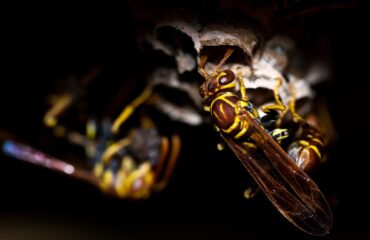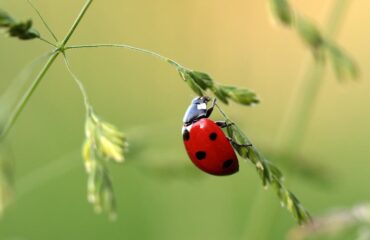Most of us don’t consider the micro wonders in our world when we discuss the awesome parts of nature. Watching tiny animals like insects in their habitats shows that nature can still be complex, even on a small scale. Every insect has developed characteristics that help it to adapt to its environment. The intricate behaviours, aesthetic appeal and architecture are part of the many wonders that call attention to the micro part of the animal kingdom.
What Is Insect Architecture?
The term insect architecture refers to any form of design or construction created by insects in nature. While existing in their natural habitat, insects have to design structures that can help with their basic needs: securing and storing food, raising offspring (especially in colonies), and escaping predators. Insects may take a while to complete these structures, but they always display amazing engineering skills in every finished product. Insects can also repair damage to their structures, which happens quite often due to external forces. Insects will try to defend these structures because they are essential to survival.
Types of Insect Architecture

There are numerous examples in nature where insects have showcased their engineering skills. Here are some of the most common designs in insect architecture.
- Beehives: Bees are responsible for the most famous wonder in the world of insect architecture, which is their hives. A beehive is a small wax structure congested with hexadecimal cells built with wax secreted from their bodies on both sides. The holes in a beehive vary in size and can store the queen, honey, pollen, and water or raise workers, broods and drones. Usually, the size and position of the cells determine what they are used to store. Bees have special glands and mouthparts and the ability to communicate with each other, making it possible to complete such a complex project. Other insects, like wasps, also create hives with wax, but it is less elegant than the hexadecimal repetition in beehives.
- Leaf Structures: Rather than build wax structures, some insects use natural materials like leaves to build structures. These insects either secret silk or any adhesive substance that can be used to fasten the leaves together. The insects have to be equipped with solid mouthparts and work together to manipulate each leaf into the required shape. Leaf structures do not have structural integrity or durability, unlike most habitats, so they are often temporary measures. A habitat made of leaves is very susceptible to attacks from predators.
- Webs and Cocoons: Although spiders are not insects, they are getting an honourable mention on this list because of their web. The spider web is an impressive sight and a mystery science is still trying to uncover. It is always inspiring how a single spider can spin an intricate hanging structure made of silk with little support. Upon extensive research, scientists discovered that spider silk is a very tough material, even more potent than steel. Thanks to its silk glands, the spider creates a web to hunt and trap insects and spins cocoons around its prey to store it for later.
- Termite Mounds: Termites prove their destructive abilities when attacking wood but show their creative side when defining details in their mounds. These mounds are enormous structures of soil and saliva that can grow meters tall. The mixture acts like a makeshift concrete material that protects from impact and regulates the inner temperature of the mound. The termite queen resides in the most protected region deep within the mound. Ants create a similar structure to termites but use a different set of materials, and the structure is mainly under the soil. Both ants and termites have strong mouthparts for excavation, which helps construct mounds.
- Insect Galleries: Wood galleries are another entry on the list of microarchitectures in the insect world. Insects like termites, beetles and ants leave tiny and complex trails in wood during their infestation. The shape and size of the resulting gallery depend on the wood and the insect at work. Unfortunately, galleries weaken the structure of wood, limiting its usefulness. That is why protecting the wood from insect attacks is very important. Insects need a robust mandible, chemical senses, and behavioural adaptations to create such habitat in timber.
Benefits of Insect Architectures in Nature
The primary functions of an insect architecture serve the best interest of an insect or a colony, but there are a few benefits apart from that.
- It Enriches the Soil: Mounds and hills open up the soil to gain nutrients and become more fertile. It also improves the structure of the soil, especially its water-retaining ability. Food stored in ant hills and building materials like leaves add nutrients directly to the soil.
- It Generates Habitats for Insects: All of the architectures mentioned so far serve as a habitat for insects, among other functions. Habitats like mounds and hives can be home to thousands of insects working together. The insects built these structures themselves, so it is advantageous for them when they go against prey or predators.
- It Helps with Pollination: While going about the activities required to sustain their architecture, some insects help pollinate flowers. Pollination is a critical process in the propagation of plants, which is essential for the ecosystem. Bees are the major contributors to the pollination of plant flowers.
Potential Challenges with Insect Architecture in Nature
You may experience the following if insects go unchecked with their architecture.
- It can Cause Damage: Insects damage valuable things such as buildings and crops in their quest to build their utopia. Unfortunately, the damages may lead to severe losses or even danger in the case of damaged structures in buildings. A grave blow to human agriculture will also affect other areas of our society.
- It may Lead to Diseases: These insects may threaten human health if they are venomous or disease carriers. Another problem with the effect of insects on agriculture is the contamination of food on a large scale. Humans must deal with significant insect structures in their environs to avoid damage and diseases.
Also, if an insect structure is efficient enough in an ecosystem, it places its resident insects on the food chain, disturbing the ecosystem. Wood-consuming insects cause severe damage to several trees if they are not curbed.



